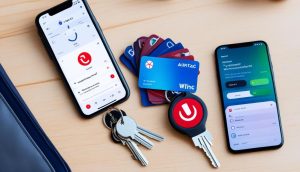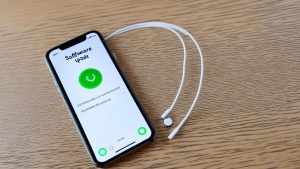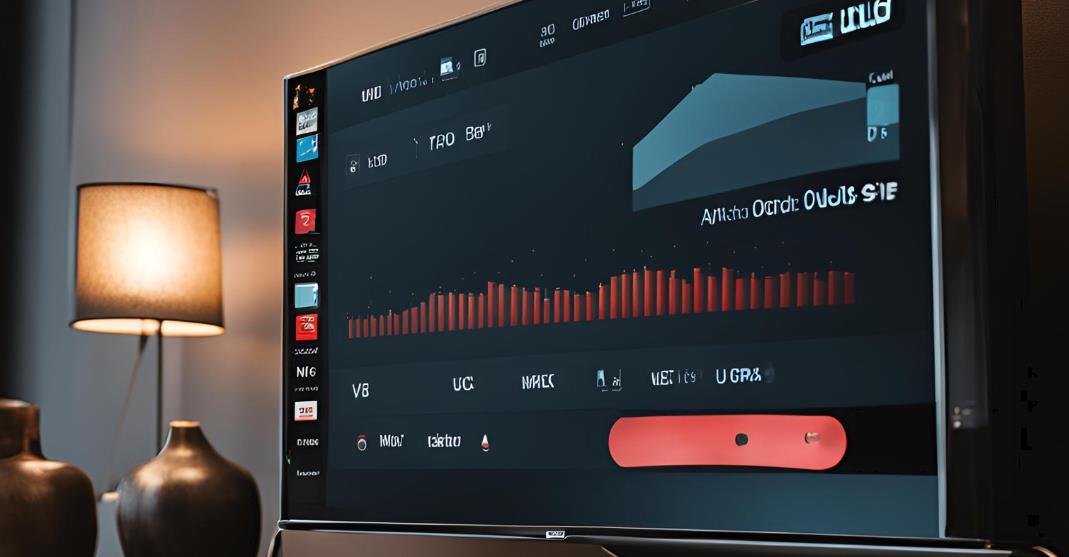AirTags are convenient tracking devices created by Apple to help people locate personal items like keys, wallets, and bags. However, concerns have arisen about their potential misuse for tracking individuals without their knowledge. This blog will help you understand how to detect if an AirTag might be tracking you and what steps to take if you suspect one is.
How AirTags Work
AirTags are small, disc-shaped devices equipped with Bluetooth technology, which allows them to communicate with nearby Apple devices. These devices then send the AirTag’s location data to Apple’s Find My network, enabling the owner to track the tagged item. This system leverages a vast network of Apple devices, making it effective even in large public spaces. AirTags are also equipped with a small speaker, which can emit a sound to help locate them. The seamless integration with Apple’s ecosystem makes AirTags a powerful tool for keeping track of personal belongings, but it also raises privacy concerns when used improperly.
How To Know If Airtag Is Tracking You
1. Receiving an Unknown Accessory Detected Alert
iPhone users benefit from Apple’s proactive security measures, including alerts when an unknown AirTag is detected moving with them. This feature is designed to prevent unwanted tracking and ensure user safety. When such an alert appears, it usually provides information on the duration the AirTag has been moving with you and offers options to disable it. This immediate notification system helps individuals quickly become aware of potential unauthorized tracking.
2. Hearing a Beeping Sound

An important safety feature of AirTags is their ability to emit a sound if separated from their registered owner for an extended period. This feature is meant to alert people nearby of the AirTag’s presence. If you hear a faint beeping and can’t identify the source, especially in personal spaces like your car or home, it might indicate an AirTag trying to alert you to its location. This beeping can be subtle, so it may require a quiet environment to detect, highlighting the importance of being observant of unusual sounds.
3. Using an Android Device
While Android users do not have the same built-in alert systems as iPhone users, they can still detect AirTags using Apple’s “Tracker Detect” app. This app allows Android users to scan for nearby AirTags and other Find My-enabled devices. The process involves a manual scan, which, if it detects a tracking device, will provide instructions on how to disable it. This app is an essential tool for Android users to protect themselves from unauthorized tracking, especially in public spaces or unfamiliar settings.
4. Checking for AirTags Physically
Given their small size, AirTags can be discreetly placed in or on your belongings. Conducting a thorough physical search of your items, such as bags, jackets, or vehicles, can help you identify an AirTag that might have been hidden without your knowledge. Look for unusual objects or modifications to your personal items. This step is crucial if you receive alerts or hear beeping sounds, as it helps confirm the presence of a tracking device and enables you to take immediate action.
What to Do If You Find an AirTag
1. Disable the AirTag

If you find an AirTag that does not belong to you, disabling it is the first step to stop it from tracking your movements. This can be done by pressing down on the device’s stainless steel cover and twisting it counterclockwise to remove the battery. Once the battery is removed, the AirTag will cease to function, preventing it from continuing to broadcast its location. This immediate action ensures that you are no longer being tracked.
2. Contact Authorities
If you suspect the AirTag was placed with malicious intent, contacting local authorities is a critical step. Law enforcement can investigate the situation further and provide you with guidance and support. Additionally, authorities may be able to trace the AirTag back to its owner using the serial number, which can be accessed via NFC by tapping the AirTag with a smartphone. This information can be vital in determining the origin of the device and addressing potential safety concerns.
3. Report to Apple
Reporting the incident to Apple is another important step, as it helps the company track instances of AirTag misuse and potentially prevent future occurrences. Apple can use the serial number and other data to assist law enforcement in their investigation. This reporting process also contributes to broader efforts to improve the safety features of tracking devices and protect individuals from unauthorized tracking.
Protecting Your Privacy
1. Update Your Devices
Keeping your iPhone or Android device updated with the latest software versions is crucial for security. These updates often include enhancements to privacy settings and new features designed to protect against unwanted tracking. For example, Apple periodically updates the Find My network’s safety features to better detect and notify users of unknown AirTags. Ensuring your devices are up-to-date maximizes your protection against potential privacy breaches.
2. Use Notification Settings

For iPhone users, customizing the notification settings within the Find My app can provide an additional layer of security. By enabling alerts for unknown devices, you ensure that you are promptly informed if an unfamiliar AirTag is detected nearby. These settings allow you to control the frequency and type of notifications you receive, helping you stay aware of any potential tracking threats.
3. Be Vigilant
Vigilance is key in protecting yourself from unauthorized tracking. Regularly checking your surroundings and personal items for unfamiliar objects can help you detect potential threats early. Pay attention to unusual behavior, such as unexpected beeping sounds or notifications on your devices. Being proactive and aware can significantly reduce the risk of being unknowingly tracked by an AirTag or similar device.
The Role of Technology in Addressing Privacy Concerns
Technology plays a crucial role in both the potential misuse of AirTags and the solutions to prevent it. Companies like Apple have implemented various safety measures, such as automatic notifications and audible alerts, to prevent their devices from being used maliciously. However, technology is constantly evolving, and new methods of unauthorized tracking can emerge. Staying informed about updates to device features, security settings, and available apps that enhance privacy can empower users to protect themselves effectively. This proactive approach not only safeguards individuals but also contributes to broader discussions on privacy and the responsible use of technology.
Community Awareness and Education
Community awareness and education are vital in addressing the potential misuse of tracking devices like AirTags. By educating the public about the capabilities and risks associated with these devices, individuals can become more vigilant and take appropriate actions when necessary. Initiatives such as public information campaigns, online tutorials, and workshops can help spread awareness about privacy protections and how to use technology responsibly. Additionally, fostering an open dialogue about privacy concerns can encourage companies to continuously improve their products and services, ensuring they meet ethical standards and protect users’ rights. Ultimately, a well-informed community is better equipped to navigate the challenges posed by emerging technologies.
Understanding how to detect and respond to unauthorized AirTag tracking is essential for safeguarding your privacy. By familiarizing yourself with the signs of unwanted tracking, such as receiving alerts or hearing beeping sounds, and knowing the steps to take, you can protect yourself from potential misuse. Always act promptly if you suspect you are being tracked, and don’t hesitate to seek help from authorities and report the incident to Apple. Staying informed and vigilant is the best defense against unauthorized tracking, ensuring your safety and peace of mind.
Also Read: How Often Does AirTag Update Location?
FAQs on How to Know If an AirTag Is Tracking You
1. How can I tell if an AirTag is tracking me?
If you have an iPhone, you’ll receive an alert if an unknown AirTag is detected moving with you. This alert, labeled “Unknown Accessory Detected,” typically appears if the AirTag has been near you for an extended period. Additionally, AirTags emit a sound if they are separated from their owner’s device for a certain amount of time, which can help you locate them.
2. What should I do if I receive an “Unknown Accessory Detected” alert?
If you receive this alert, use the Find My app to see if it includes any information about the AirTag, such as its serial number. You can also use the app to play a sound on the AirTag to help locate it. If you find the AirTag and it does not belong to you, disable it by removing the battery, and consider contacting local authorities, especially if you suspect malicious intent.
3. Can Android users detect AirTags?
Yes, Android users can use the “Tracker Detect” app available on the Google Play Store to scan for nearby AirTags. While this app does not automatically notify users like iOS, it allows manual scanning to detect any AirTags that may be moving with them. If an AirTag is detected, the app provides instructions on how to disable it.
4. What does it mean if I hear a beeping sound from an unknown source?
A beeping sound could indicate that an AirTag is near you and has been separated from its owner’s device for a certain period. This sound is a safety feature designed to alert people to the presence of an AirTag. If you hear a persistent beeping, investigate your surroundings to locate the AirTag and take appropriate action.
5. How do I disable an AirTag I find?
To disable an AirTag, press down on the stainless steel back and twist it counterclockwise to open the device. Then, remove the battery. This action stops the AirTag from broadcasting its location and prevents it from being tracked.
6. What steps should I take if I find an AirTag tracking me?
First, disable the AirTag by removing the battery. Then, report the incident to local law enforcement, especially if you believe the AirTag was placed with malicious intent. You should also report the AirTag to Apple, providing them with the device’s serial number, which can help in any investigations.
7. Can I prevent AirTags from tracking me in the future?
While you cannot completely prevent an AirTag from being placed on or near you, you can take steps to protect yourself. Ensure that your devices are updated with the latest software, enable notifications for unknown devices in the Find My app, and regularly check your belongings for unfamiliar items. Staying vigilant and informed about new safety features and potential threats can help you protect your privacy.


